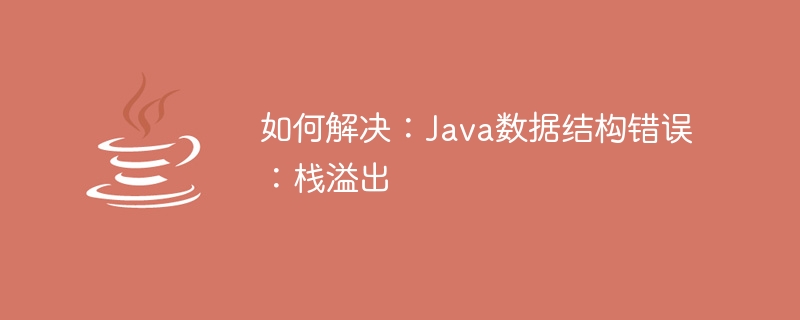

How to solve: Java data structure error: stack overflow
Introduction:
In Java programming, stack overflow (Stack Overflow) is a common but also Data structure errors that are easy to fix. When calling a method or function recursively, if there are too many levels of recursion, a stack overflow error may occur. This article will introduce the causes of stack overflow and provide some tips and methods to solve this problem.
1 2 3 4 5 6 7 8 9 10 11 12 13 |
|
In this example, we do this by calling calculateFacttorial method to calculate the factorial of 5. When the number of levels of recursive calls exceeds a certain limit, a stack overflow error occurs.
3.1. Optimizing recursive algorithms:
In some cases, recursion The algorithm can be optimized to reduce the number of layers called. For example, when calculating the Fibonacci sequence, dynamic programming or iteration can be used instead of recursion to avoid stack overflow.
3.2. Increase the stack size:
By default, the JVM will allocate a certain amount of stack space for each thread. The stack size can be increased by adding the -Xss parameter when starting the JVM. For example, you can run the sample code using the following command:
1 |
|
This will increase the stack size to 1MB.
3.3. Reduce the use of local variables and parameters:
Local variables and method parameters will occupy space on the stack. Reducing their use reduces the burden on the stack, thereby reducing the risk of stack overflow.
3.4. Avoid infinite loops:
Infinite loops are another common cause of stack overflow. Make sure to avoid infinite loops when writing your code, or avoid stack overflows by setting termination conditions for loops.
The above is the detailed content of How to solve: Java data structure error: stack overflow. For more information, please follow other related articles on the PHP Chinese website!
